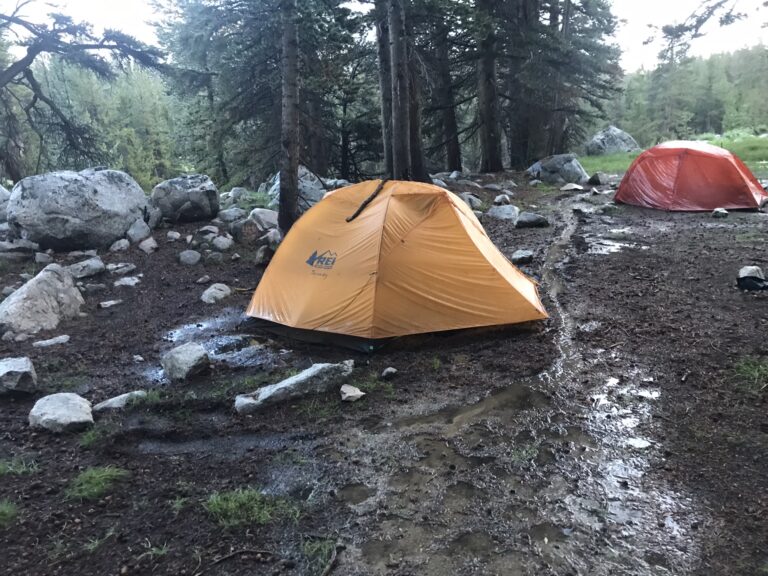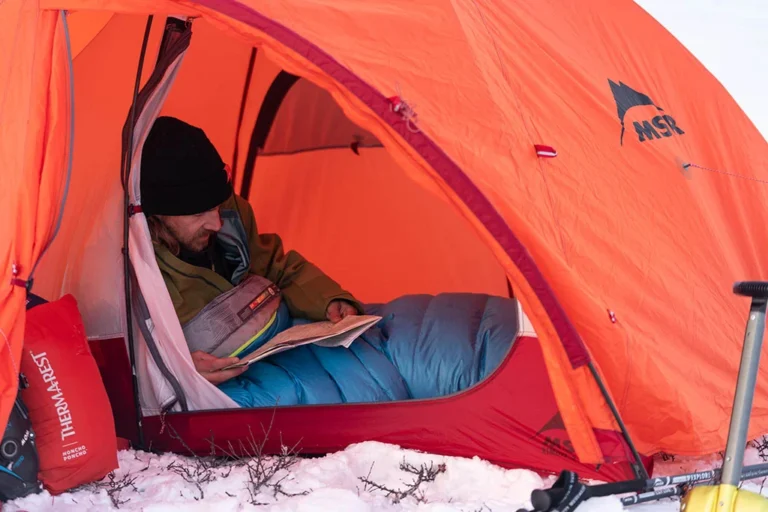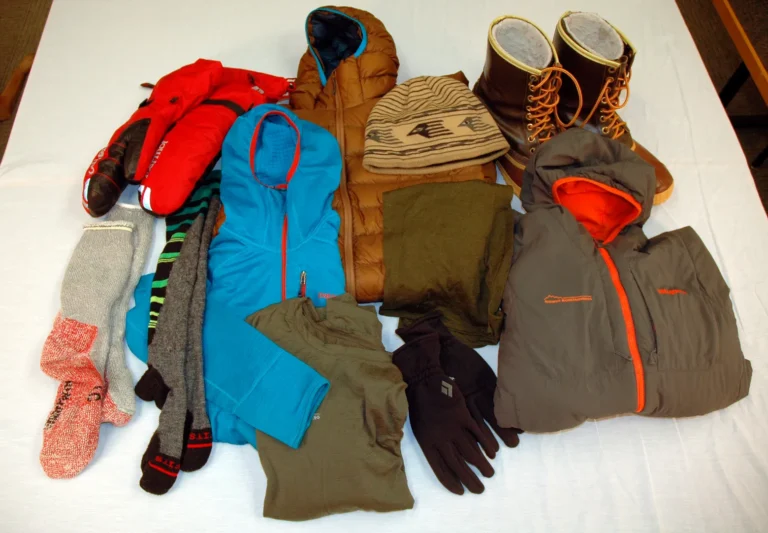General Comments on Gear
Buy high quality gear. Purchase good backpacking equipment from a reputable supplier. The comfort level of high quality gear is superior to that of inexpensive, poorly made items.
High quality gear will hold up best, and should you have problems, the manufacturer will often replace damaged items.
Freshen your sleeping bag and tent. Immediately after returning from your trip, put your sleeping bag and tent out in the sun to air. Turn them frequently so that they don’t sustain sun damage. When they are dry, bring them indoors. Tents and sleeping bags must be thoroughly dry before you store them since they are easily ruined by mildew. Even if it didn’t rain during your trip, condensation most likely formed and collected on your gear.
Get a hiking staff. There are several advantages to having a hiking staff: On rocky terrain, it can help you keep your balance. When stepping over rocks or logs, you can use it to ward off snakes. Or you can use it to flick debris off the trail. It can help you ford streams successfully and substitute as a pack rest for your backpack when no trees are around.
Select wide mouths. Wide mouthed plastic bottles are best for carrying water because their bottoms, where bacteria can grow, are easy to clean. Their design lets you remove partially frozen water.
Pack lighter, not heavier. Many inexperienced hikers try to carry much more weight than is comfortable or safe. The result can be a less than pleasant trip or pulled muscle.
Trim away ounces. Look at each piece of gear to see if you can find a lighter one to replace it. Or can you make that particular piece of gear lighter? Ounces add up to pounds.
Use a plastic spoon instead of a metal one, a plastic cup instead of a metal one.
Stand bottles upright. Always put your gas and water bottles outside and right side up in an outside pack pocket. Gaskets can leak on gas bottles and could contaminate your clothes and food with fumes.
Stuff the inside space. In the pack, place heavy items as close to your back as you can. You can carry weight much more comfortable this way. If you have an internal frame pack, pad sharp objects because they will invariably poke you as soon as you shoulder the pack and begin to hike.
Develop a system. Fill your pack the same way each time you use it, and try to avoid stuffing things into any pocket at random. Using a system will save you much time when a storm is approaching and you’re trying to get rain gear on or your tent up. It’s nice to know, too, just where that flashlight is in the dark.
Put pocket to good use. In an outside pack pocket, keep items handy that you will use often throughout the course of the day rain gear, sunglasses, toilet paper, and maps. With those items handy, you won’t need to open your pack very often.






